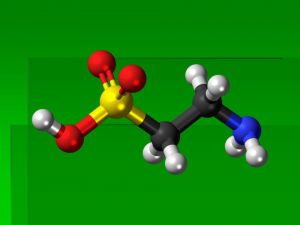Wikisage, the free encyclopedia of the second generation, is digital heritage
Taurine: Difference between revisions
No edit summary |
No edit summary |
||
| Line 3: | Line 3: | ||
In 1827, the German professors Friedrich Tiedemann and Leopold Gmelin became the pioneers who isolated the currently known taurine originating from ox bile and they named it „Gallen‑Asparagin”, the currently used name, taurine, first appeared in the literature in 1838 by von H. Demarcay<ref>Baliou S, Adamaki M, Ioannou P, et al. [https://www.ncbi.nlm.nih.gov/pmc/articles/PMC8240184/pdf/mmr-24-02-12242.pdf Protective role of taurine against oxidative stress (Review)]. Mol Med Rep. 2021;24(2):605</ref> | In 1827, the German professors Friedrich Tiedemann and Leopold Gmelin became the pioneers who isolated the currently known taurine originating from ox bile and they named it „Gallen‑Asparagin”, the currently used name, taurine, first appeared in the literature in 1838 by von H. Demarcay<ref>Baliou S, Adamaki M, Ioannou P, et al. [https://www.ncbi.nlm.nih.gov/pmc/articles/PMC8240184/pdf/mmr-24-02-12242.pdf Protective role of taurine against oxidative stress (Review)]. Mol Med Rep. 2021;24(2):605</ref> | ||
Taurine is known as semi-essential in mammals and is produced chiefly by the liver and kidney. It presents in different organs, including retina, brain, heart and placenta and demonstrates extensive physiological activities within the body<ref>Jakaria M, Azam S, Haque ME, et al. Taurine and its analogs in neurological disorders: Focus on therapeutic potential and molecular mechanisms. Redox Biol. 2019;24:101223</ref> | Taurine is known as semi-essential in mammals and is produced chiefly by the liver and kidney. It presents in different organs, including retina, brain, heart and placenta and demonstrates extensive physiological activities within the body<ref>Jakaria M, Azam S, Haque ME, et al. Taurine and its analogs in neurological disorders: Focus on therapeutic potential and molecular mechanisms. Redox Biol. 2019;24:101223</ref>The activity of taurine on GABA<sub>A</sub> receptors counters seizures mediated by a GABA<sub>A</sub> antagonist picrotoxin, via elevating the latency of seizures<ref>[https://www.ncbi.nlm.nih.gov/pmc/articles/PMC6536745/ lib cit.]</ref> | ||
[https://onlinelibrary.wiley.com/doi/10.1002/mnfr.201800536 Taurine is Involved in Energy Metabolism in Muscles, Adipose Tissue, and the Liver] | [https://onlinelibrary.wiley.com/doi/10.1002/mnfr.201800536 Taurine is Involved in Energy Metabolism in Muscles, Adipose Tissue, and the Liver] | ||
[[nl:Taurine]] | [[nl:Taurine]] | ||
Revision as of 12:20, 30 October 2022

Taurine or 2-aminoethane sulfonic acid is an organic acid with a sulfonic acid group and an amino group. Taurine is an amino sulfonic acid and not an amino acid and therefore cannot form peptides. It is produced in metabolism as a breakdown product of the amino acid cysteine.
In 1827, the German professors Friedrich Tiedemann and Leopold Gmelin became the pioneers who isolated the currently known taurine originating from ox bile and they named it „Gallen‑Asparagin”, the currently used name, taurine, first appeared in the literature in 1838 by von H. Demarcay[1] Taurine is known as semi-essential in mammals and is produced chiefly by the liver and kidney. It presents in different organs, including retina, brain, heart and placenta and demonstrates extensive physiological activities within the body[2]The activity of taurine on GABAA receptors counters seizures mediated by a GABAA antagonist picrotoxin, via elevating the latency of seizures[3] Taurine is Involved in Energy Metabolism in Muscles, Adipose Tissue, and the Liver
- ↑ Baliou S, Adamaki M, Ioannou P, et al. Protective role of taurine against oxidative stress (Review). Mol Med Rep. 2021;24(2):605
- ↑ Jakaria M, Azam S, Haque ME, et al. Taurine and its analogs in neurological disorders: Focus on therapeutic potential and molecular mechanisms. Redox Biol. 2019;24:101223
- ↑ lib cit.